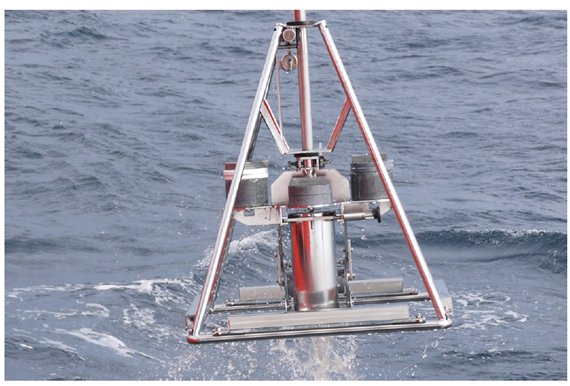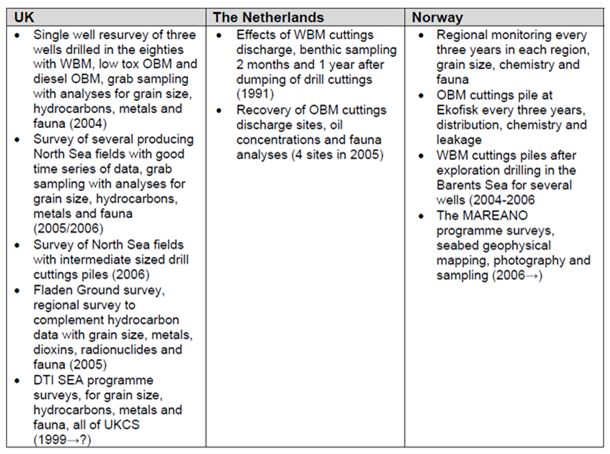Author: Vincenzo Piemonte, Associate Professor, University UCBM – Rome (Italy)
1. Theme description
The global environmental situation of the Earth is becoming increasingly problematic and critical. The outlook for our future is increasingly gloomy. The major reason for this pessimistic outlook is the exploding number of people. At the same time, the consumption per person has risen tremendously in the developed countries. There is no doubt that the Earth will not be able to satisfy such increasing demand. Because of the developments described above, radical changes to the global situation and especially to the ecology are ahead. Air pollution, the greenhouse effect, and the noticeable impact of both on coastal areas, especially in the Third World, represent of course important critical points.
Today, the opportunity has fallen to us that we can try to get the necessary information on the overall situation by means of modern remote sensing methods. The advantage of this kind of environmental data supply is that information is obtained worldwide by a single standard, and at regular, short intervals, applying comparable measures. These aspects of regularity and comparability offer great potential because they provide the possibility of producing “snapshots” of the environmental situation at regular intervals.
From a general point of view, environmental monitoring can be defined as the systematic sampling of air, water, soil, and biota in order to observe and study the environment, as well as to derive knowledge from this process [1], [2]. Monitoring can be conducted for a number of purposes, including to establish environmental “baselines, trends, and cumulative effects”, to test environmental modeling processes, to educate the public about environmental conditions, to inform policy design and decision-making, to ensure compliance with environmental regulations, to assess the effects of anthropogenic influences, or to conduct an inventory of natural resources [3].
Environmental monitoring can be conducted on biotic and abiotic components of any of Earth spheres (see figure 1), and can be helpful in detecting baseline patterns and patterns of change in the inter and intra process relationships among and within these spheres. The interrelated processes that occur among the five spheres are characterized as physical, chemical, and biological processes. The sampling of air, water, and soil through environmental monitoring can produce data that can be used to understand the state and composition of the environment and its processes.
Environmental monitoring uses a variety of equipment and techniques depending on the focus of the monitoring. For example, surface water quality monitoring can be measured using remotely deployed instruments, handheld in-situ instruments, or through the application of biomonitoring in assessing the benthic macro invertebrate community [4]. In addition to techniques and instruments that are used during field work, remote sensing and satellite imagery can also be used to monitor larger scale parameters such as air pollution plumes or global sea surface temperatures.
Figure 1 – The five spheres of the Earth System [5]
2. Environmental monitoring applied to offshore Oil&Gas platforms
When conducting oil and gas operations, there is a risk of impacting the marine environment. Generally, environmental authorities set up guidelines to monitor the environmental conditions around oil and gas production platforms.
Using results from a long-term survey programme, it is normally assessed:
- the environmental state around the platforms compared with a reference station
- spatial and temporal changes in the environmental state of the seabed around the platform
As part of the monitoring surveys, several samples of sediment (see figure 2) at different monitoring stations can be collected in order to carry out:
- physical and chemical analyses
- the identification and quantification of benthic fauna
Physical and chemical analyses on the samples can include:
- grain size analysis and determination of the median grain size and the silt/clay fraction of the sediment
- dry matter, loss on ignition and total organic carbon
- metals – Barium (Ba), Cadmium (Cd), Chromium (Cr), Copper (Cu), Lead (Pb), Zinc (Zn), Mercury (Hg) and Aluminium (Al)
- total hydrocarbons and polycyclic aromatic hydrocarbons/ alkylated aromatic hydrocarbons (PAH/NPD)
Analyses of the collected benthic fauna can include:
- species identification
- biodiversity and abundance analyses
- biomass of all major taxonomic groups (as total wet weight and total dry weight)
- precisely determining the biomass of the brittle star Amphiura filiformis, which is known to be sensitive to drilling activities
Figure 2 – Sediment samples being collected around platforms using a HAPS core sampler
Statistical analyses and available literature can be also used to evaluate the environmental state around the platforms.
Generally, to ensure high quality of collected results, all procedures complied with relevant international Health, Safety and Environmental (HSE) standards and with the requirements of local environmental authorities. This included performing the survey in accordance with respect to the:
- number of samples taken
- analyses of samples for certain physical, chemical and biological variables
3. An Example of application: UK, Netherlands and Norway case studies [6]
Monitoring activities have been performed in all three countries to look at effects of discharges in the sediments and in the water column. Effects on migrating birds of flaring and light from offshore installations has been monitored at the Dutch Continental Shelf and studies on the effects of seismic activity on fish and marine mammals have been performed on the Norwegian Continental Shelf. An overview of the performed monitoring activities in the United Kingdom, the Netherlands and Norway are given in Tables 1, 2 and 3.
Monitoring of sediments contaminated by discharges of oil-based muds (OBM) has shown that the benthic communities close to the discharge points have been highly modified, and with a transitional zone with detectable effects on benthic fauna and an outer zone with no detectable effects on the fauna. This is shown in all three countries. The areas contaminated with OBM are decreasing and so are the benthic effects. The Dutch study found biological effects out to 250 meters from the discharge point 20 years after the discharge. The latest data from Norway show a total contaminated area of 155 km2 on the Norwegian Continental Shelf. This is chemical contamination and not biological disturbance and the area also includes sites where OBM has never been operationally discharged. Hydrocarbon contamination at these sites may be caused by produced water or accidental spills.
The Dutch study on effects of discharge of water-based muds (WBM) cuttings showed no detectable effect on the benthic community. Norwegian monitoring and one-off surveys have shown a disturbance of the fauna typically out to approximately 50 meters from single wells. The disturbance is most likely caused by the physical impact of the cuttings, and species living in or on the sediment dies. However, a rapid colonization is observed, but the composition of species may change if the grain size is changed. In areas with several production wells the area affected is larger and effects may be caused by other discharges than WBM and cuttings.
Results from Norwegian water column monitoring in the last few years show positive results in the sense that the methods used are now functioning. It is crucial to know enough about how the plume of produced water is mowing to be able to place the cages with test species at the right spots. The results show that caged mussels in the effluent accumulate PAH and that the levels decrease with increasing distance from the discharge.
The biological effects (biomarkers) also show gradients with stronger responses in the cages closest to the produced water discharge. The levels of PAH-metabolites suggest a moderate exposure level. The Dutch study showed an accumulation of naphthalene in blue mussel in a distance of 1000 meters from the platform. The analyses of wild fish in the Norwegian Tampen area have shown increased levels of DNA-adducts in haddocks. A different lipid content or lipid composition of the cell membranes has been shown in cod and haddock from the Tampen area compared to other areas in the North Sea. These effects may be due to the fish feeding on old cuttings piles, and are not necessarily a result of today’s produced water discharges. It is, however, not concluded what these findings mean for the individual fish, the populations or the ecosystems as such.
Other monitoring activities or studies than the monitoring of impacts of discharged have also been performed by the three countries. The Dutch study on birds suggests that the chance that flaring directly impacts a flock of birds is small and only significant at night during the migration periods.
Table 1 – Sediment monitoring
Table 2 – Water column monitoring
Table 3 – Other monitoring activities
Sound did not appear to have any affect on seabirds or songbirds during migration. But the study calculates that about 10 % of the total bird population crossing the North Sea is impacted in some way by the light emitted from the main deck at offshore installations. The Norwegian study on impacts of seismic surveys on fish showed that impacts (including mortality) on fish and their early life stages only occurred immediately adjacent (< 5 metres) to the sound source. This impact was not significant at the population level and did not affect recruitment into commercial stocks. Fish show a startle response to impulsive sound and the effect may be observed up to 30 km from the source.
________________________








[…] scale, remote sensing by satellite imaging can be used to monitor large scale parameters such as air pollution plumes, global sea surface temperatures, waves, marine animals, and phytoplankton blooms, as well as in the identification and tracking of […]